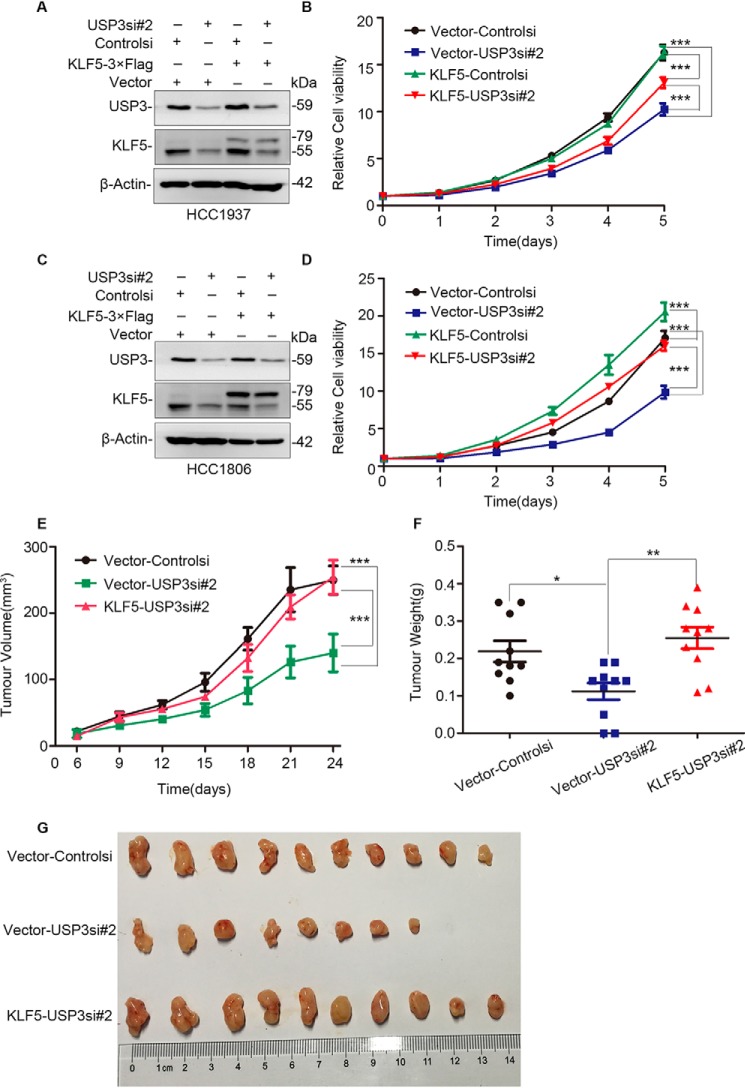Figure 5.
USP3 knockdown suppresses cell proliferation partially through KLF5. A, KLF5 stable overexpression and USP3 knockdown in HCC1937 cells were confirmed by WB. Vector alone was used as the negative control for KLF5. B, KLF5 overexpression significantly restored cell proliferation in USP3 knockdown HCC1937 cells. The cells with stable KLF5 overexpression were transfected with siRNA and then implanted into 96-well plates. The cell viability was measured by the sulforhodamine B assay every day. Every experimental group was compared with the control siRNA group. ***, p < 0.001, t test. Error bars represent S.D. of five samples in parallel. Interactions between KLF5 and USP3 were found in HCC1937 (F = 21.051, p < 0.0001) cells by the analysis of variance of factorial design. The experiment was repeated three times, and a representative result is shown. C, KLF5 stable overexpression and USP3 knockdown in HCC1806 cells were confirmed by WB. D, KLF5 overexpression significantly restored cell proliferation in USP3 knockdown HCC1806 cells. ***, p < 0.001, t test. Interaction between KLF5 and USP3 was found in HCC1806 (F = 10.284, p = 0.005) cells by the analysis of variance of factorial design. The experiment was repeated three times, and a representative result is shown. E, stable overexpression of KLF5 restored USP3 knockdown HCC1806 xenograft growth in nude mice. Xenograft tumor growth was measured twice per week. Data points represent the means ± S.D. of five mice per group (10 tumors). ***, p < 0.001, t test. F, stable overexpression of KLF5 significantly increased tumor weight in USP3 knockdown HCC1806 cells (n = 10). Error bars represent S.D. **, p < 0.01, t test. G, stable overexpression of KLF5 generated larger xenografts in USP3 knockdown HCC1806 cells at day 24.

